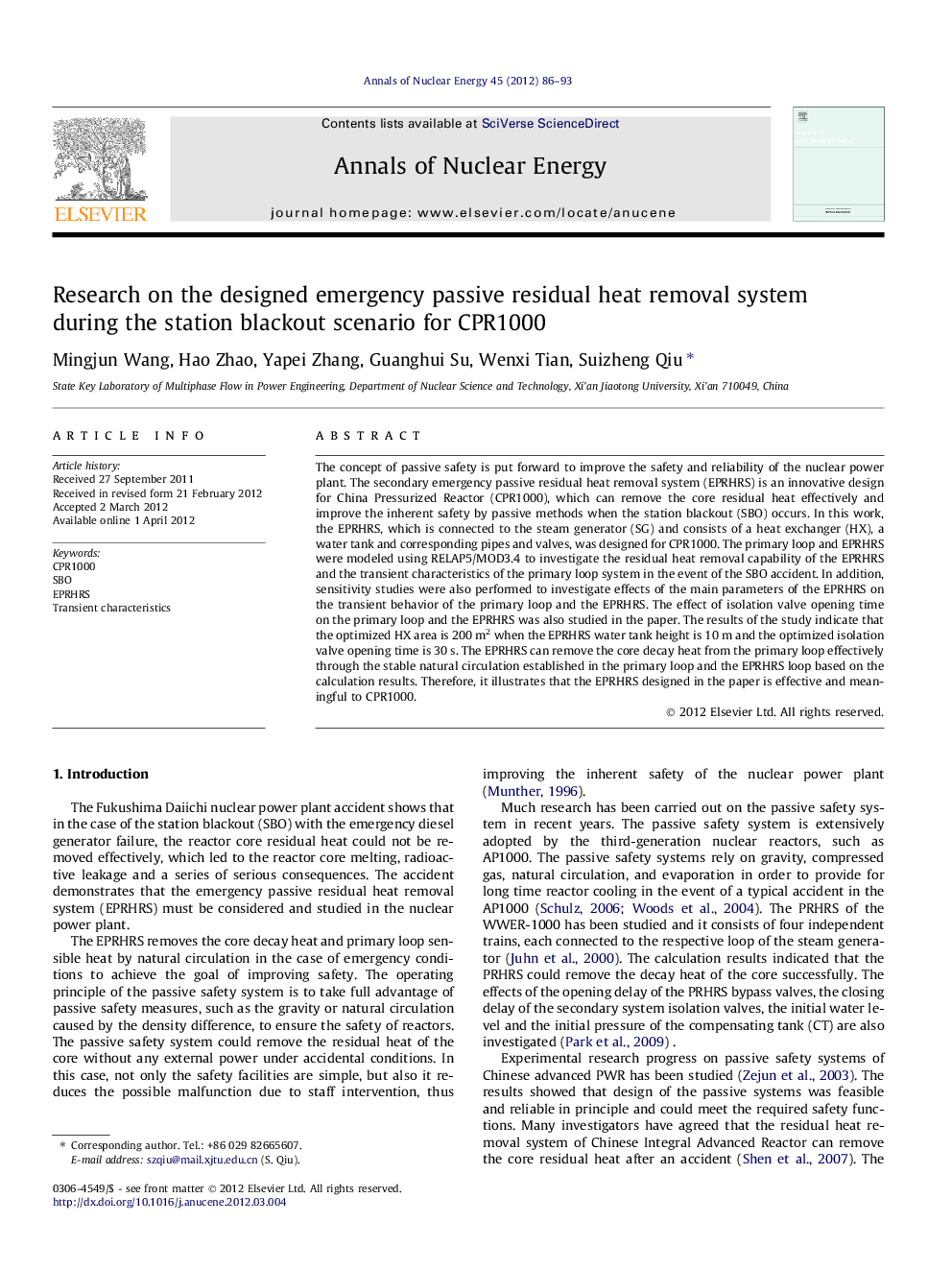| Article ID | Journal | Published Year | Pages | File Type |
|---|---|---|---|---|
| 1728898 | Annals of Nuclear Energy | 2012 | 8 Pages |
The concept of passive safety is put forward to improve the safety and reliability of the nuclear power plant. The secondary emergency passive residual heat removal system (EPRHRS) is an innovative design for China Pressurized Reactor (CPR1000), which can remove the core residual heat effectively and improve the inherent safety by passive methods when the station blackout (SBO) occurs. In this work, the EPRHRS, which is connected to the steam generator (SG) and consists of a heat exchanger (HX), a water tank and corresponding pipes and valves, was designed for CPR1000. The primary loop and EPRHRS were modeled using RELAP5/MOD3.4 to investigate the residual heat removal capability of the EPRHRS and the transient characteristics of the primary loop system in the event of the SBO accident. In addition, sensitivity studies were also performed to investigate effects of the main parameters of the EPRHRS on the transient behavior of the primary loop and the EPRHRS. The effect of isolation valve opening time on the primary loop and the EPRHRS was also studied in the paper. The results of the study indicate that the optimized HX area is 200 m2 when the EPRHRS water tank height is 10 m and the optimized isolation valve opening time is 30 s. The EPRHRS can remove the core decay heat from the primary loop effectively through the stable natural circulation established in the primary loop and the EPRHRS loop based on the calculation results. Therefore, it illustrates that the EPRHRS designed in the paper is effective and meaningful to CPR1000.
► We design a SG secondary EPRHRS for CPR1000. ► Functional verification and transient characteristics of EPRHRS. ► Sensitivity studies of main parameters of the EPRHRS. ► The designed EPRHRS is effective and meaningful.
